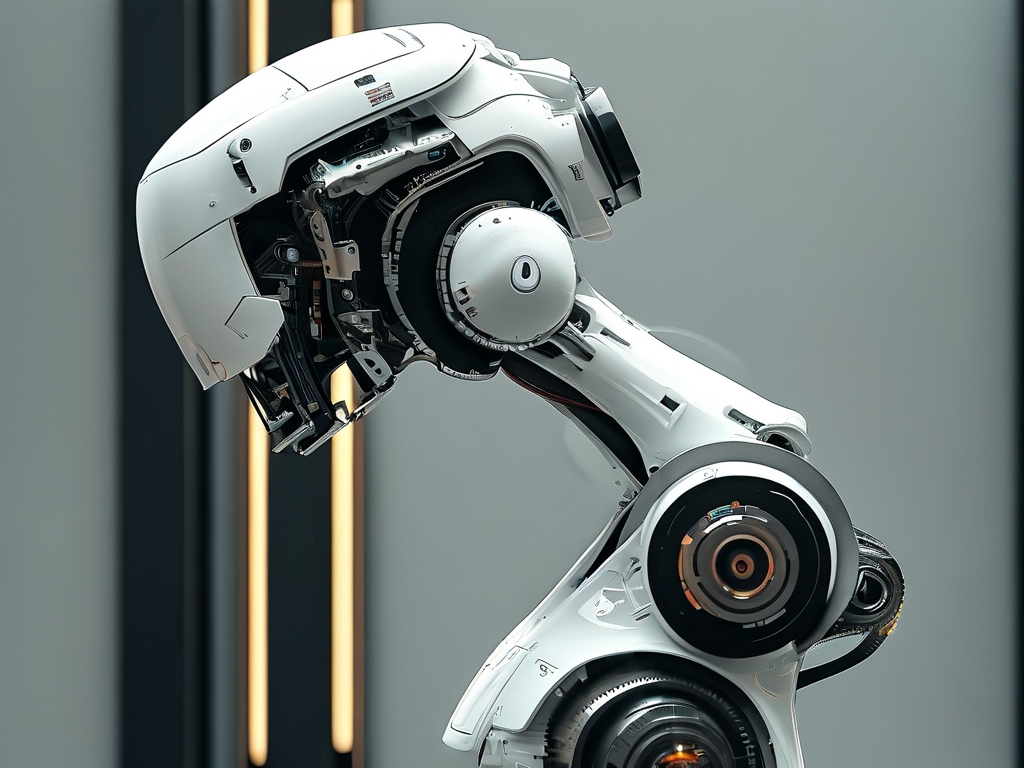Humanoid robotics has entered a transformative era, with joint technology standing as the cornerstone of mobility and functionality. Unlike conventional industrial robots, humanoid systems require joints that mimic human biomechanics while delivering precision, durability, and adaptability. This article explores cutting-edge solutions in joint design and their implications for next-generation robotics.

Biomimetic Engineering in Joint Development
Modern humanoid joints increasingly adopt biomimetic principles to replicate natural movement patterns. Take, for instance, the integration of synthetic tendon networks in shoulder and hip joints. These elastic polymer-based structures enable energy-efficient force transmission while absorbing shock during dynamic motions like jumping or stair climbing. Researchers at the MIT Biomechatronics Lab recently demonstrated a knee joint prototype combining hydraulic damping with artificial ligaments, achieving 92% energy recovery during gait cycles—a leap toward self-sustaining mobility.
Modular Actuation Systems
The shift toward modular joint architectures addresses two critical challenges: maintenance complexity and scalability. Companies like Boston Dynamics now implement cartridge-style servo modules containing motors, sensors, and control circuitry within standardized housings. This approach allows rapid component replacement and performance upgrades without full system disassembly. A notable example is the updated Atlas robot, whose wrist joints feature swappable actuator packs supporting torque ranges from 5Nm to 40Nm through simple gear ratio adjustments.
Sensor Fusion for Adaptive Control
Contemporary joint systems employ multi-layered sensing arrays to achieve real-time responsiveness. Tactile pressure membranes, embedded strain gauges, and inertial measurement units (IMUs) work in tandem to create closed-loop feedback systems. When Toyota unveiled its latest HSR (Human Support Robot), its finger joints demonstrated this through a 0.1mm precision grip adjustment algorithm that processes data from 14 microsensors per digit at 500Hz frequencies.
Material Science Breakthroughs
Advanced composites are redefining joint durability without compromising flexibility. Carbon-fiber-reinforced polyether ether ketone (CFR-PEEK) has emerged as a game-changer, offering 3x the wear resistance of traditional aluminum alloys at 40% reduced mass. NASA’s Valkyrie humanoid robot utilizes CFR-PEEK knee bushings that survived 18 months of simulated Martian terrain testing with under 0.3mm deformation—a critical milestone for extraterrestrial deployment.
Energy Recovery Paradigms
Regenerative joint mechanisms now convert kinetic energy into reusable power. Festo’s BionicCobot implements a flywheel energy storage system within its elbow joints, capturing over 65% of deceleration energy during repetitive lifting tasks. This technology not only extends operational duration but also reduces thermal buildup—a persistent issue in high-duty-cycle applications.
Challenges in Power-to-Weight Optimization
Despite progress, balancing torque density with energy efficiency remains contentious. While harmonic drives deliver exceptional torque (up to 300Nm in units under 1kg), their inherent friction causes 15-20% efficiency losses. Emerging magnetic-geared actuators show promise, with prototypes from ETH Zurich achieving 89% efficiency at 120Nm outputs, though commercial scalability remains unproven.
Ethical and Safety Considerations
As joint capabilities advance, safety protocols struggle to keep pace. The European Robotics Board recently mandated redundant joint-lock mechanisms in all humanoids operating near civilians after a 2023 incident where a service robot’s overloaded hip joint failed during patient transfer. Such regulations are driving innovations like Samsung’s fail-safe electropermanent magnet couplings that disengage joints within 8ms of torque anomalies.
Future Directions: Neuromorphic Integration
The next frontier lies in merging joint mechanics with neuromorphic computing. Intel’s Loihi 2 chips are being tested in prototype ankle joints that process terrain data through on-board spiking neural networks. Early trials show 40% faster balance corrections compared to traditional PID controllers, hinting at a future where joints possess localized "reflex arcs" independent of central processors.
From medical rehabilitation to disaster response, advanced joint technologies are expanding humanoid robotics’ operational horizons. As material scientists, mechanical engineers, and AI specialists collaborate, we edge closer to creating machines that move—and perhaps eventually think—with human-like grace. The joint, once a simple mechanical pivot, has evolved into a sophisticated nexus of mechanics, electronics, and computational intelligence.

